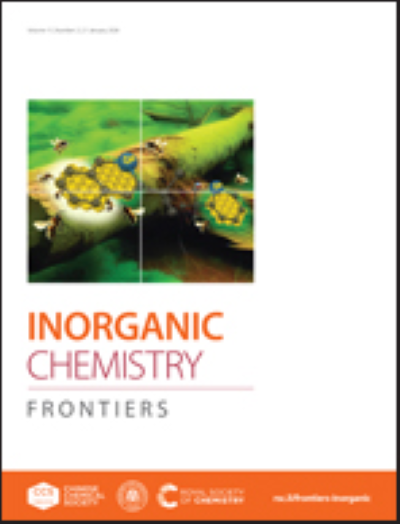Synthesis and Bio-evaluation of Aminoferrocene-Based Anticancer Prodrugs as Potent Ferroptosis Inducers
IF 6.1
1区 化学
Q1 CHEMISTRY, INORGANIC & NUCLEAR
引用次数: 0
Abstract
Glutathione peroxidase 4 (GPX4) plays a critical role in the ferroptosis pathway, emerging as a promising drug target for the treatment of refractory tumors. However, the poor selectivity and toxicity problem of current GPX4 covalent inhibitors have hampered the development of GPX4-targeted cancer therapy. Benefiting from the reactive oxygen species (ROS)-initiated activation of N-alkylaminoferrocenes (NAAF), a series of NAAF-appended GPX4 inhibitors have been developed as novel ferroptosis-inducing prodrugs, particularly RSL3-NAAF hybrid I-1 and ML162-NAAF hybrid II-1. These two complexes displayed comparable anticancer activities with those of their precursor compounds, but with superior ferroptosis selectivity and exceptional safety profiles on normal cells. In this study, the efficient release of the GPX4 inhibitor from II-1 under high ROS conditions along with its significant ROS-inducing ability at both the molecular and cellular levels have been evidenced, leading to its potent inhibition on GPX4 and remarkable ferroptosis inducing potency. These data indicate promising aminoferrocene-based anticancer agents for further evaluation. The effectiveness of NAAF-based prodrug strategy may not only advance the development of ROS-responsive prodrugs for ferroptosis-related anticancer treatments, but also highlight the significance of metallocene-containing bioorganometallics for potential disease therapies.氨基铁二茂抗癌前药作为强铁下垂诱导剂的合成及生物评价
谷胱甘肽过氧化物酶4 (Glutathione peroxidase 4, GPX4)在铁凋亡通路中起着关键作用,成为治疗难治性肿瘤的一个有希望的药物靶点。然而,目前GPX4共价抑制剂的选择性差和毒性问题阻碍了GPX4靶向癌症治疗的发展。利用活性氧(ROS)激活n -烷基胺二茂铁(NAAF),一系列NAAF附加的GPX4抑制剂被开发为新型的诱导铁凋亡的前药,特别是RSL3-NAAF杂化I-1和ML162-NAAF杂化II-1。这两种复合物显示出与其前体化合物相当的抗癌活性,但在正常细胞上具有优越的铁下垂选择性和特殊的安全性。本研究证实了GPX4抑制剂在高ROS条件下从II-1中高效释放,并在分子和细胞水平上具有显著的诱导ROS的能力,从而导致其对GPX4的有效抑制和显著的诱导铁下垂的能力。这些数据表明,基于氨基二茂烯的抗癌药物有进一步评估的前景。基于naaf的前药策略的有效性不仅可以促进ros反应前药的开发,用于铁中毒相关的抗癌治疗,而且还可以突出含茂金属的生物有机金属材料在潜在疾病治疗中的意义。
本文章由计算机程序翻译,如有差异,请以英文原文为准。
求助全文
约1分钟内获得全文
求助全文
来源期刊

Inorganic Chemistry Frontiers
CHEMISTRY, INORGANIC & NUCLEAR-
CiteScore
10.40
自引率
7.10%
发文量
587
审稿时长
1.2 months
期刊介绍:
The international, high quality journal for interdisciplinary research between inorganic chemistry and related subjects
 求助内容:
求助内容: 应助结果提醒方式:
应助结果提醒方式:


